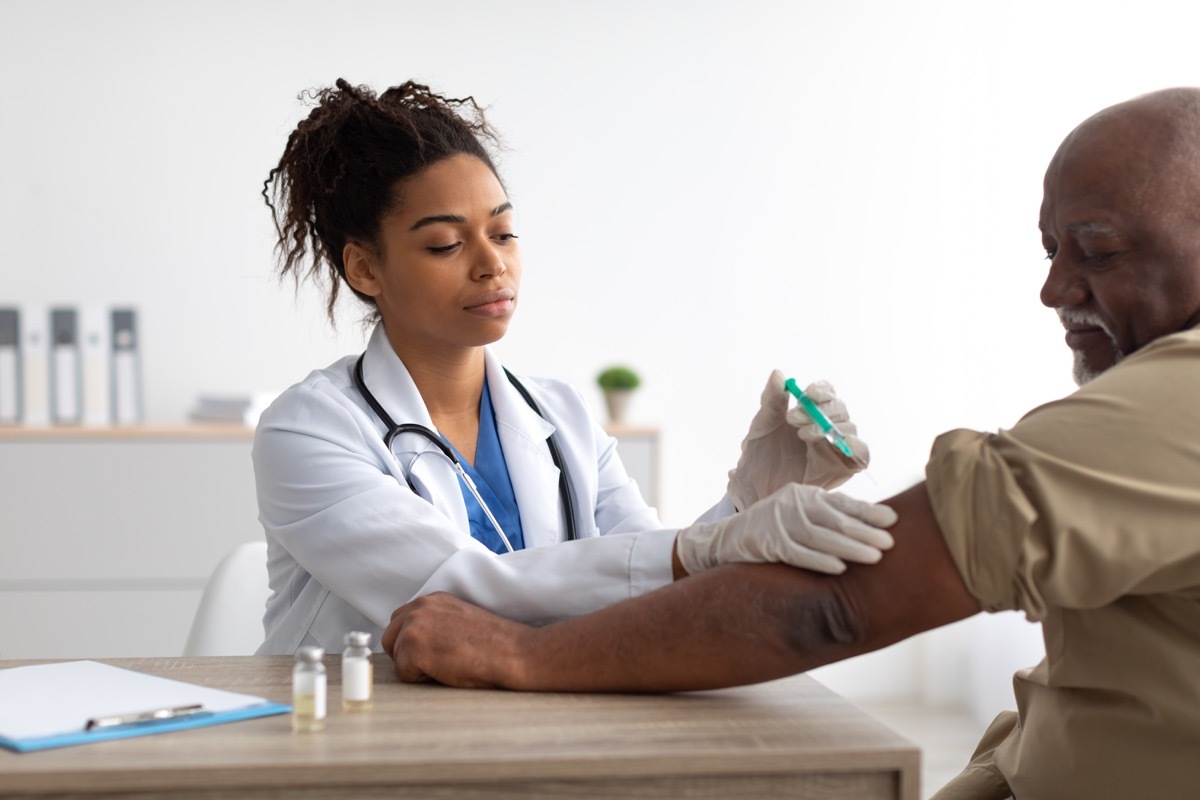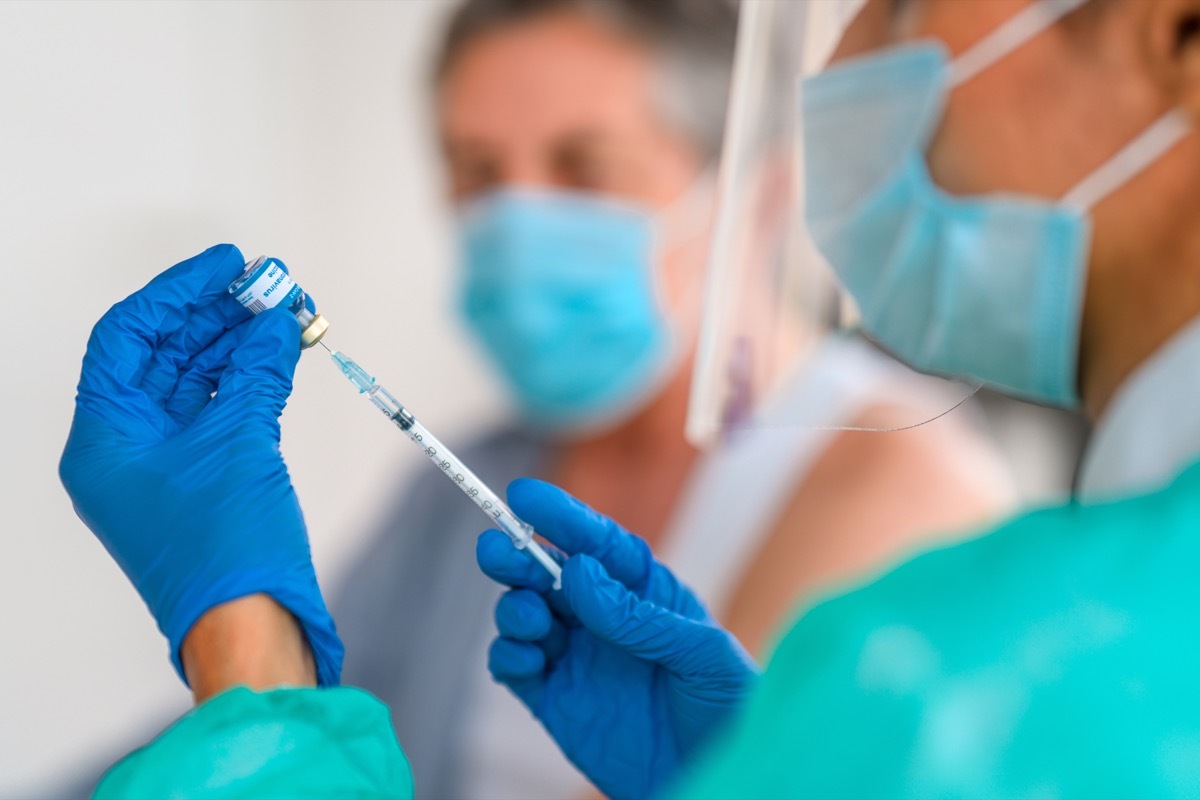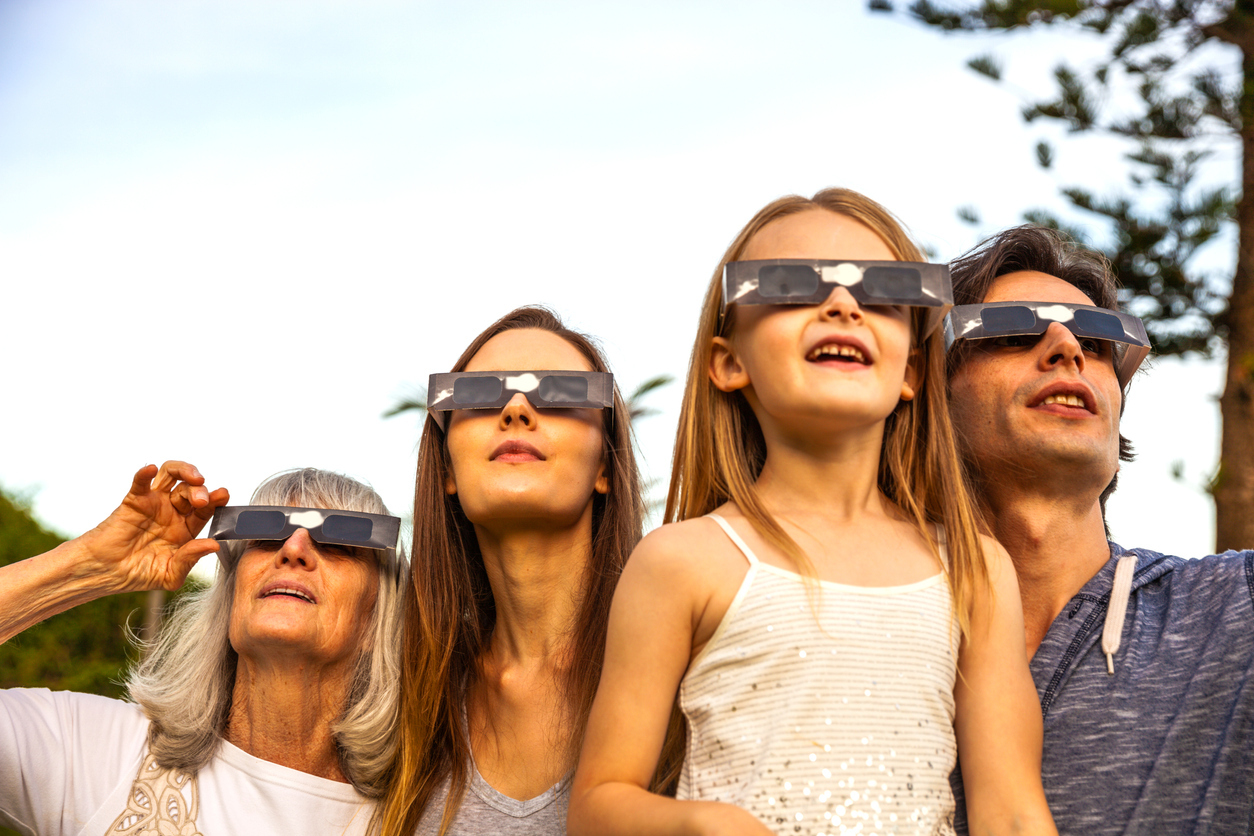Higit sa 50? Ang iyong shingles panganib soars kung mayroon ka nito, bagong pag-aaral sabi
Tinutukoy ng mga mananaliksik ang isang bagong panganib na kadahilanan para sa masakit na kondisyon na ito.

No one wants shingles, an infection that creates a painful, blistery rash that can last for weeks, but unfortunately it's quite common. According to the Centers for Disease Control and Prevention (CDC), it is estimated that one million people in the U.S. develop shingles each year. And for some who end up with this condition, the rash may even be the least of their worries. Shingles can lead to a number of serious complications including blindness, pneumonia, hearing problems, and brain inflammation. Even scarier, roughly 100 people die from the condition each year, with almost all fatalities being among elderly adults or immunocompromised people. To help prevent this, a new study has pinpointed one shingles risk factor for adults over the age of 50. Read on to find out if you could be more likely to develop this condition.
Kaugnay:Eating This After 65 Can Add Years to Your Life, New Study Says.
Older adults are more likely to develop complications from shingles.

Anyone who has had chickenpox can develop shingles, also formally known as the herpes zoster (HZ). This is because once you recover from chickenpox, the varicella zoster virus (VZV) that causes it lays dormant in your body and can reactivate later in life. But older adults with HZ are more likely to experience complications from this infection.
According to the CDC, about 10 to 18 percent of people who suffer from shingles go on to develop a condition called postherpetic neuralgia (PHN), and this risk increases with age. PHN is severe nerve pain that can last for month or years. "An older adult with shingles is more likely to develop PHN and have longer lasting and more severe pain than a younger person with shingles. People younger than 40 rarely experience PHN," the CDC explains.
People over 50 who have had COVID are at a higher risk of shingles.

A new study has connected the coronavirus with an increased risk of shingles in older adults. For the study, which was published April 5 in the Open Forum Infectious Diseases journal, researchers analyzed nearly 2 million people age 50 or older and compared the incidence of HZ between those who had and who had not been previously diagnosed with COVID.
According to their findings, SARS-CoV-2 was found to be associated with a significant increase risk of developing shingles in this age group. The researchers found that even a mild case of coronavirus in someone 50 or older made them 15 percent more likely to develop HZ within six months. The impact was even higher for older adults who had a more severe COVID case: Those hospitalized were found to be 21 percent more likely to develop shingles than those who were not infected.
RELATED: For more health news, Mag-sign up para sa aming pang-araw-araw na newsletter.
The CDC recommends that people in this age group stay up-to-date on their shingles vaccine.

According to the researchers, it is possible that a COVID infection could trigger VSV reactivation, leading to the development of shingles. "Health care professionals should consider that COVID-19 may be a risk factor for HZ," they wrote in their study.
But the researchers also say there could be a way to lessen the potential of shingles even if you are 50 and get COVID. According to the study, staying up-to-date with your recommended HZ vaccinations could help prevent you from developing shingles, "as HZ is a vaccine-preventable disease."
The CDC recommends that adults 50 years and older get two doses of the shingles vaccine Shingrix, separated by two to six months. "In adults 50 years and older who have healthy immune systems, Shingrix is more than 90 percent effective at preventing shingles and PHN," the agency explains, adding that there is no maximum age for getting this vaccine and even those who have had singles or received a chickenpox vaccine can get Shingrix.AE0FCC31AE342FD3A1346EBB1F342FCB.
People over 50 have also been advised to get another COVID shot.

If you're over 50, you'll likely want to stay up-to-date on your protection against COVID to also avoid raising your risk of shingles. At this point in the pandemic, people 50 years old or older are now eligible for four COVID shots. On March 29, both the CDC and then U.S. Food and Drug Administration (FDA) expanded their vaccine guidelines to allow older adults the option to get a second booster shot of the Moderna or Pfizer vaccine if it has been at least four months since their initial boost.
Neither agency explicitly said that you should or need to get this extra dose, however—just that you "may choose "Upang gawin ito kung ikaw ay 50 o mas matanda. At habang ang iba't ibang mga eksperto sa virus ay patuloy na bumalik-balik kung ang isang pangalawang tagasunod ay kinakailangan para sa lahat ng edad na ito, pinayuhan ito ng ilan." Ako inirerekomenda ka at makuha ang [ikaapat] na pagbaril kung ikaw ay higit sa 50, "Nangungunang White House Covid Adviser Anthony Fauci. , Sinabi ng MD sa isang interbyu sa Abril 11 sa MSNBC's Ang reidout.
Kaugnay: Mahigit sa 50 porsiyento ng mga taong nakakakuha ng covid na ito sa karaniwan, sabi ng pag-aaral .

47 Thanos quote upang parangalan ang pinakadakilang kontrabida ni Marvel

Ang # 1 dahilan para sa labis na katabaan, ayon sa mga doktor
